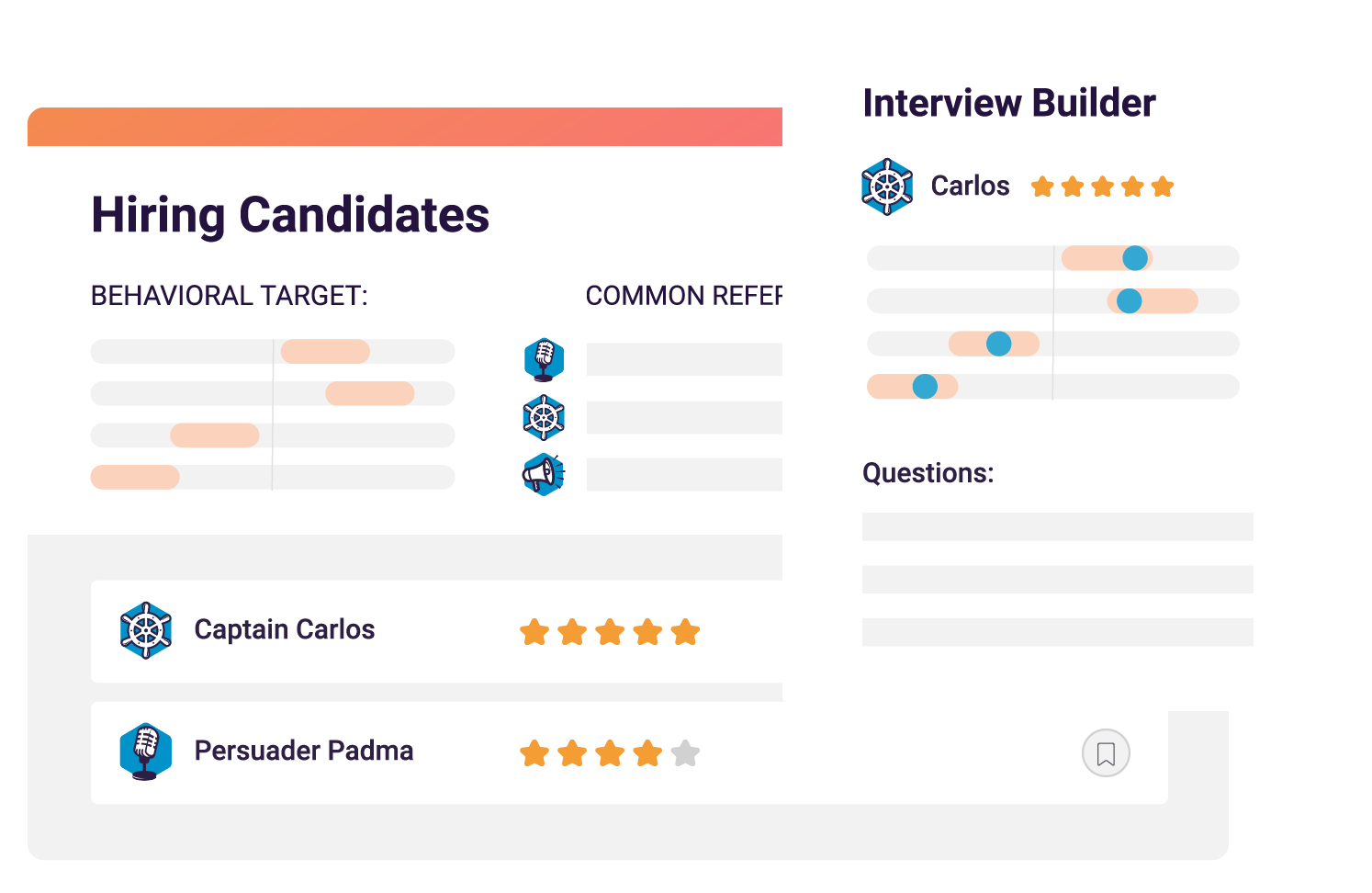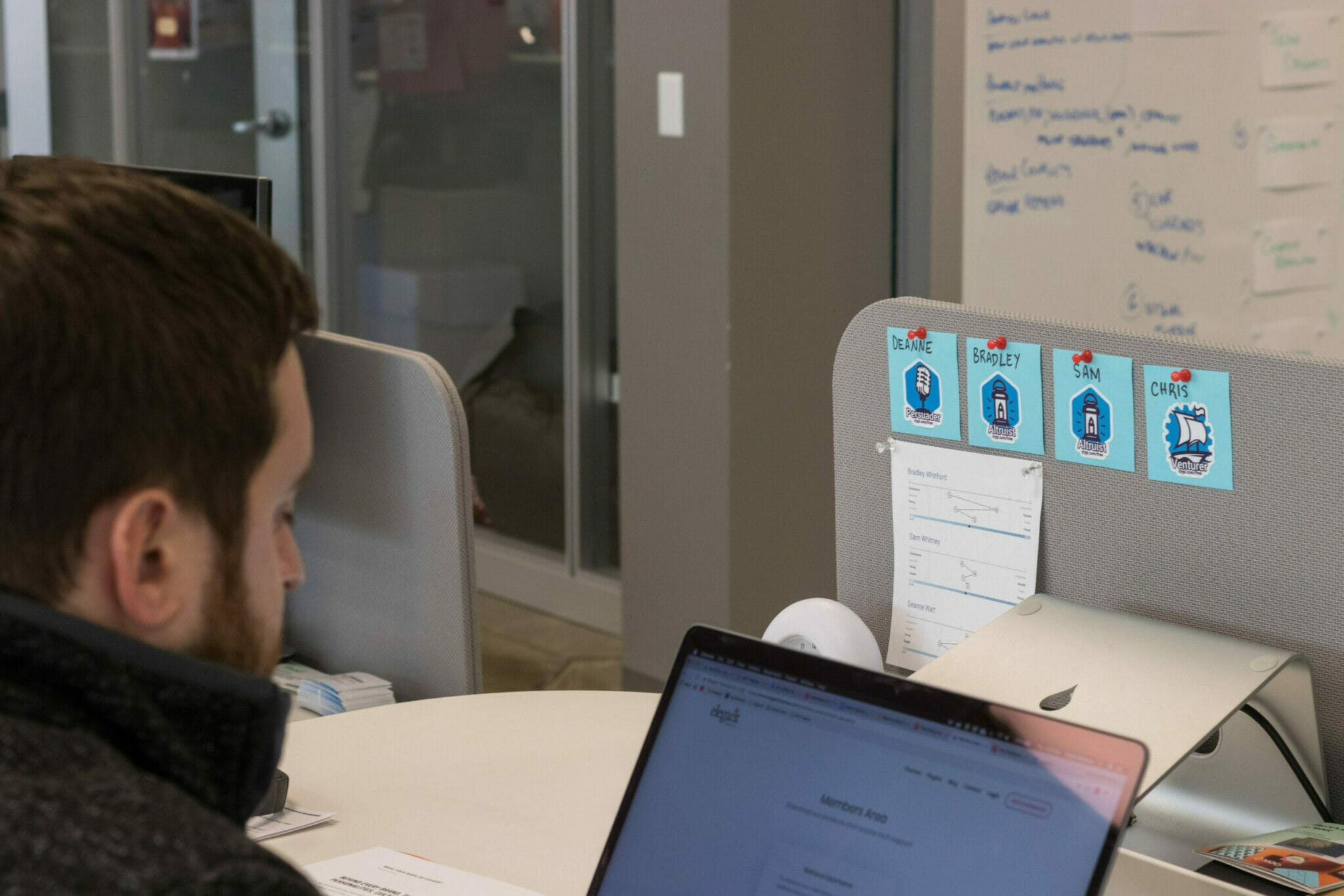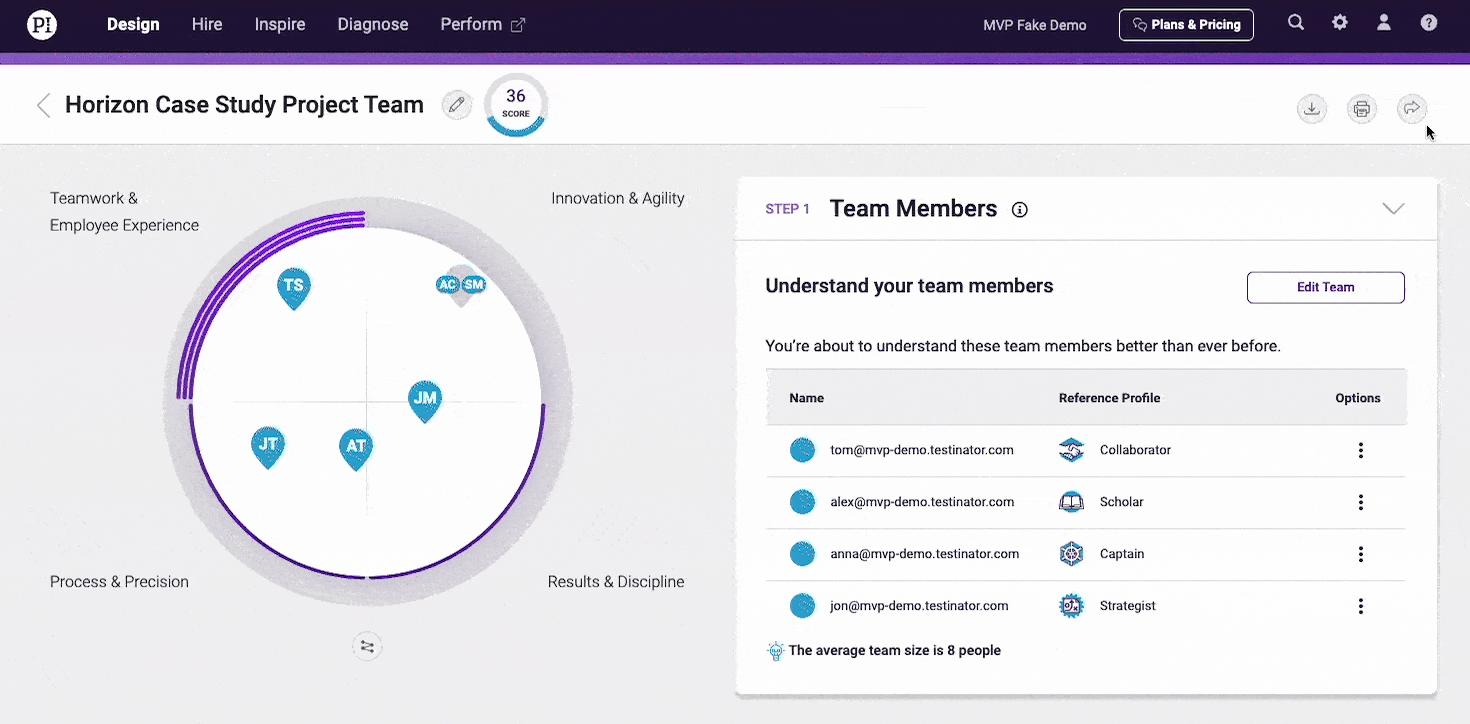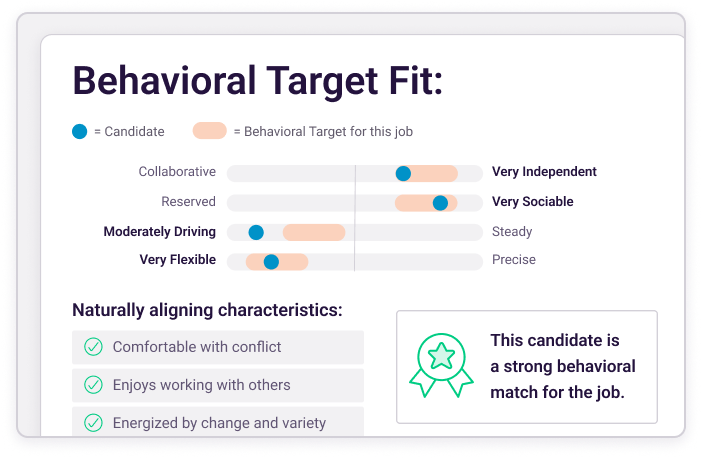The nature-versus-nurture debate has kept both experts and laymen squabbling for decades. But as with most things, the truth lies somewhere in the middle. We all have innate (nature) and acquired (nurture) personality traits, and these traits play a vital role in a team’s productivity and harmony in the workplace
Understanding personality in the workplace is an ideal place to start to uncover the nuances and communication preferences of your prospective and current team members. While personality assessments can aid in team building, they also reveal both innate and acquired personality traits, which directly impact a team’s cohesion and performance.
In this guide, we dig into the differences between innate and acquired personality traits, and the implications of both for the workplace.
What are innate traits?
Innate personality traits are traits we were born with, which means they’re unlikely to change much over time. For example, if you’re still short after puberty, you won’t get taller later in life. This characteristic is innate.
If you’re innately introverted and shy, it’s unlikely you’ll one day become extraverted. It’s certainly possible to become more comfortable communicating with people, but you’ll always need alone time to recharge.
Examples of innate personality traits:
- Genetic makeup
- Intelligence/cognitive abilities
- Physical features
- Openness
- Neuroticism
- Agreeableness
- Introversion/extraversion
- Dominance
- Formality
- Patience
When it comes to the workplace, understanding your own innate personality traits as well as those of your team members is essential, as it fosters healthy team dynamics, communication, and collaboration.
If you have a coworker who is extremely introverted, don’t bombard them with questions about their weekend first thing in the morning. Or if you have a coworker who is highly dominant in their behavior, ignoring their ideas, bossing them around, or micromanaging them will almost certainly result in conflict and reduced productivity.
Learn more about the dominant personality in the workplace.
What are acquired traits?
Acquired personality traits we develop over time through education, experience, and our environment.
Sticking with the height example above, you could be short, but if you dedicate significant time to working on your jump shot, you can still acquire the skills necessary to perform as well or better than the taller members of your basketball team.
Examples of acquired personality traits:
- Assertiveness
- Leadership skills
- Conflict resolution skills
- Resilience
- Emotional intelligence
- Time management
- Adaptability
- Work ethic
In the workplace, it’s just as important to consider acquired traits, as these will contribute to an employee’s performance and how well they work with the team. The key difference is that acquired traits can be learned over time.
For instance, while some people are born more empathetic than others, emotional intelligence is a skill that can be honed with education and practice. The more you understand your own emotions and what triggers them, as well as what triggers your colleagues, the better your communication and conflict resolution will be.
You may not have been born with a great deal of emotional intelligence, but you can certainly build this skill with intentionality and consistent practice.

Integrate PI with your existing workflow
With 97+ integrations, you can keep everything in sync to align your talent strategy with business goals.
The interplay between innate and acquired traits
Both innate and acquired traits influence one another to make up our unique personalities, such that the lines between innate and acquired traits can become blurred. For example, developing new skills (acquired) can influence innate traits. Learning how to play an instrument or a new language can strengthen your memory and cognitive abilities, which might otherwise be considered innate.
On the other hand, you may be naturally intelligent (innate), but if you’ve never worked to develop your work ethic or resilience (acquired), it’s unlikely you’ll be very productive in your personal or professional life.
Innate and acquired traits can develop and influence each other over the course of our lives, so our traits can’t always be boxed into “innate” or “acquired.” Both are essential, and both impact the other.
You may have been born with the innate trait of introversion, which means it’s unlikely you’re eager to get up and deliver a presentation in front of a group of people. However, you can overcome some of your shyness by participating in improv groups and working on your public speaking skills.
The more you expose yourself to something challenging and move beyond your comfort zone, the more confident you’ll feel. Of course, once the presentation is over, you may need to take some time to yourself to recharge. You’re not necessarily becoming less introverted; you’re acquiring new skills that make you a more effective speaker.
Implications in the workplace
Now, what impact do your team’s innate and acquired traits have on the various facets of your workplace?
1. Team dynamics
For a team to be effective, it needs to be balanced. If each person on the team is dominant, the team will break down due to infighting because everyone wants to be in charge. If every member of the team lacks dominance, no one will be willing to take charge, offer innovative ideas, or take risks.
In both cases, team harmony and productivity suffer.
The happiest and most productive teams have a variety of different personality traits while also understanding each other’s unique strengths, weaknesses, communication preferences, and work styles. They know how to collaborate, communicate, and delegate efficiently and effectively because they understand and trust each other.
Will a project culminate in a presentation? Let the more dominant team members handle the public-facing presentation aspects while the quieter and more patient team members can focus on thoroughly editing the script. These routine and repetitive tasks are likely to bore dominant members but allow the more detail-oriented to thrive, and vice versa.
Predictive Index facilitates balance by helping you understand the unique traits everyone brings to the team. Ensure no key trait is missing and that some traits don’t overpower other equally valuable traits with PI Hire, which provides actionable, objective data integrated into your hiring process. Increase the likelihood of hiring, decrease the chance of turnover, and harness the power of your entire team to determine the behaviors needed to excel in the role.
2. Team performance
Each employee’s traits, both innate and acquired, have a direct impact on the overall team’s performance.
Consider the Big Five—openness, extraversion, agreeableness, neuroticism, and conscientiousness. If a team member or prospective team member scores high in neuroticism but low in conscientiousness and agreeableness, they’re going to be difficult to work with, and that will have a direct negative impact on team performance.
These innate qualities are not conducive to teamwork, as the team member will frequently be irritable, impulsive, unfocused, and unconcerned about the wellbeing and emotions of their fellow team members. This is a major breeding ground for conflict, and their lack of cooperation will hinder the efficiency, effectiveness, and performance of the entire team.
Of course, you’re not looking for someone who’s perfect. Every hire will have strengths and weaknesses. What matters is that their traits balance out and complement the team as a whole.

3. Professional development
Professional development is essential to the progress of any organization, and it’s where acquired traits shine. An organization that never works to develop the skills of its teams will quickly grow stagnant.
An employee may be intimidated by public speaking, but consistent exposure to and practice with speaking in front of small and large groups will make them a more skilled speaker, which, in turn, will make them more confident and willing to take on public-facing tasks. They may still be innately shy and introverted, but their acquired skills make them more comfortable speaking in front of people—just so long as they get some time to themselves afterward.
Or let’s say an employee has trouble thinking on their feet, adapting to new situations, and making decisions in the moment. Joining an improv group or running improv exercises at work will help them hone their decision-making skills and adaptability.
While they may always be more comfortable thinking long and hard about a problem and approaching it from all angles in their minds, improv can help them grow more comfortable rolling with the punches and quickly adapting to new and unexpected situations.
As a manager, ensure your direct reports are considering their innate and acquired skills, and help guide them to the best actions they can take for professional development that aligns with their interests and current traits.
4. Goal setting
When your employees understand their innate and acquired traits, they have a much clearer view of their strengths and weaknesses, which means they know where they can improve the most.
Encourage your team to set goals that align with where they currently are while also continually pushing the boundaries of improvement.
What innate traits are lacking? Which acquired traits would most benefit them both professionally and personally?
5. Talent recruitment
When it comes to talent recruitment, balance is key to success.
For example, if you already have a number of bold, direct people on your team, hiring a calm, collected, and patient person can add some stability, facilitating increased cooperation and collaboration.
By the same token, if you have a number of quiet and unassuming people on your team, hiring a dominant extravert can inject some much-needed energy, streamlining problem-solving and decision-making.
Red flag traits to watch out for:
- Pessimism
- Poor body language/lack of eye contact
- Tardiness
- Apathy
- Listlessness
- Laziness
- Arrogance
- Defensiveness (blaming others/criticizing past employers)
- Dishonesty
- Disorganization
Positive traits to look for:
- Passion
- Enthusiasm
- Adaptability
- Agreeableness
- Resilience
- Curiosity
- Honesty
- Integrity
- Empathy
- Confidence
- Willingness to learn
- Attention to detail
- Dependability
- Approachability
How The Predictive Index can help
The PI Behavioral Assessment™ is a free six-minute assessment designed to give you a better understanding of your own strengths, caution areas, and behavioral tendencies. It measures your four behavioral drives:
Dominance, Extraversion, Patience, and Formality.
These four key factors—or key behavioral drives—provide a simple framework for understanding employees’ and candidates’ workplace behaviors, enabling you to zero in on their specific behavioral patterns to determine the best match for the role you need to fill.








